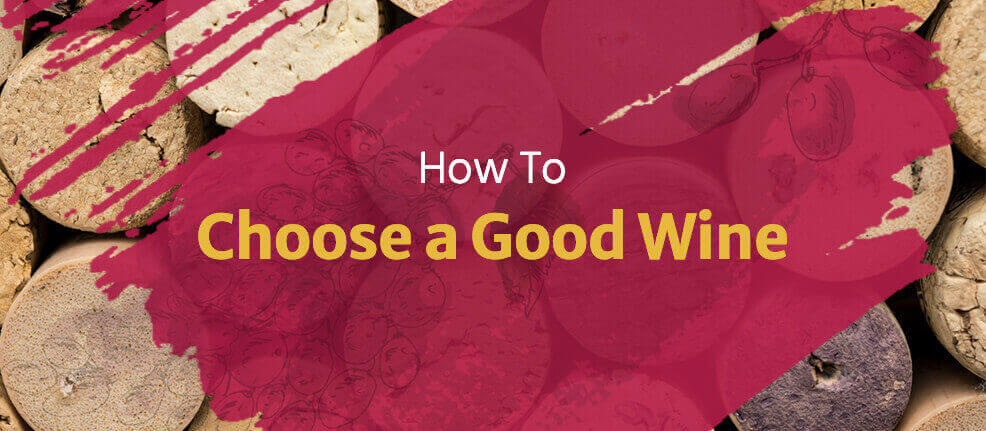
When dining in a restaurant, a sommelier, or certified wine specialist, can assist you in selecting a perfect wine, even if you do not know much about wine yourself. By asking about your taste preferences, they can recommend a wine that pairs well with your meal, while complementing your likes and dislikes. But what happens when you’re browsing the shelves or web pages of seemingly endless choices of bottles, wondering how to select a good wine? For those who are not familiar with wine, the label on the bottle or product description — complete with descriptions of flavor notes, characteristics of the wine and origin of the grapes — may only make selecting a bottle even more difficult.
The good news is, understanding some basic information about wine can help you learn more about which wines are likely to be a good fit for you — and which ones you’ll probably want to avoid. By learning about your tastes and the general characteristics of wine, you can become a wine expert in no time and feel confident in selecting a delectable wine to pair with your meal! You can also take our wine pairing quiz and find the perfect wine pairing for your next meal or upcoming special occasion!
The Basics of “Good Wine”
Choosing a good wine is completely subjective. How each person defines a good wine is unique to them and their taste buds. Whether you prefer delicate, bold, sweet, tart or even spicy flavors, it is possible to find a wine you adore. These essential characteristics that define each variety of wine can be helpful to keep in mind as you navigate picking a bottle.
- Sweetness: Wine labels often use the terms “sweet,” “semi-sweet” or “dry.” A dry wine will not be sweet at all.
- Acidity: Wines with high acidity will be more tart, whereas low-acidity wines will taste rounder or richer.
- Tannin: Tannins are phenolic compounds in the skins of grapes. When tannins are naturally present in the winemaking process or added through aging, the wine will have a more bitter taste. Because tannins also tend to dry out your mouth, people often confuse the tannin level with the “dryness” of a wine, which actually refers to how sweet or not sweet a wine is. The red winemaking process incorporates more tannins, giving some red wines a distinctively dry and bitter finish.
- Body: Wines get characterized as having a light body, full body or somewhere in between. The “body” of the wine refers to how heavy or light it feels in your mouth. Generally, red wines have a fuller body than whites, as do wines made from grapes grown in warmer regions, rather than cooler ones.
- Alcohol: The higher the percentage of alcohol in your glass of wine, the more it will warm your throat and the back of your mouth. Measured in percentage of alcohol by volume (ABV), most wines contain 11 to 13 percent alcohol, but can range from 5.5 percent all the way up to 20 percent.
Everyone will have different preferences for each of these characteristics of wine, but with the right care, you can find a bottle that fulfills your taste preferences.
Tips for Picking a Good Bottle of Wine
Since “good wine” is so subjective, knowing how to choose the right wine means considering several factors — including occasion, flavor preferences, labels and price points. While the combination of these factors is different for each person, the tips below will help anyone in search of that perfect bottle of wine.
1. If you are new to wine, start with a white or rose.
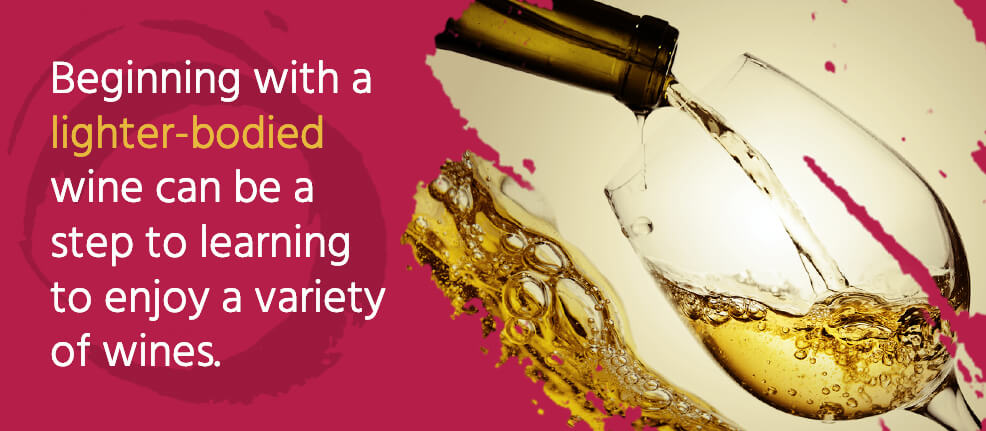
Just as your food preferences evolve as you mature, the wines you enjoy are also likely to change over time. However, a study of consumer palates by Sonoma State University found most people first enjoy a sweet white or rose wine, then later fall in love with dry reds or wines with more distinctive flavors. Fifty-four percent of respondents in the Sonoma State University study said they preferred semi-sweet or sweet white or rose wines when they started drinking wine. While each person’s experience is different, an early distaste for drier wines or wines with high tannins may be due to their unique flavor and sharp bitterness.
If the thought of drinking a sweet wine makes you cringe, that doesn’t necessarily mean you should jump to reds. Instead, opt for a dry white or rose. Beginning with a lighter-bodied wine can be a step to learning to enjoy a variety of wines.
2. Reflect on other flavors you enjoy.
Wine flavors are unique, but that doesn’t mean the flavors you enjoy in other drinks and food don’t influence what you’ll consider a good wine. On the contrary, your other taste preferences can be a great identifier of which wine you will enjoy. For example, if you have a sweet tooth, chances are you will enjoy a sweeter wine. If you thrive on the sharpness of bitter black coffee, a more acidic wine may be perfect for you. It can be that simple. Here are two questions to help get you started:
- Do you prefer apple juice or grapefruit juice? Apple juice lovers are more likely to enjoy sweet white wine, while grapefruit juice enthusiasts will likely find their match in dry white wine.
- Does your favorite dose of caffeine come in the form of a latte or black coffee? Black coffee drinkers are more likely to fall for an Old World wine — that is, wine that comes from one of the places where winemaking first began, such as France, Italy or Spain. If you prefer a latte, try a New World wine, such as something from the United States, Australia or South Africa.
3. Consider the occasion.
Are you selecting a wine for yourself to enjoy, or are you sharing with friends? Will you be pairing your wine with a meal or using it to prepare a recipe? Wines can serve different purposes, and different occasions can influence how you choose a wine. Here are a few questions to ask yourself when shopping for a bottle of wine:
- Are you searching for a crowd-pleaser? If you want to satisfy your friends or family, and pairing with food isn’t your primary objective, consider picking up a bottle of white and a bottle of red. Since wine preferences are so subjective, having one of each will cover plenty of palates. You can also opt for wines that fall closer to the middle of the spectrum on sweetness, acidity and body. More balanced or moderate flavors are likely to appeal to more of your guests.
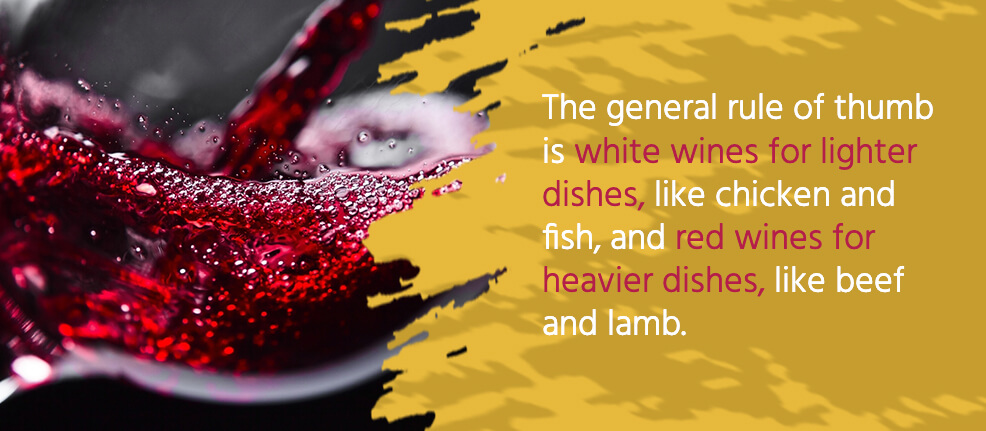
- Are you pairing with a meal? If you want to find a wine that complements your carefully crafted dinner, the general rule of thumb is white wines for lighter dishes, like chicken and fish, and red wines for heavier dishes, like beef and lamb. Read on for more specific ways to pick the perfect wine for your meal.
- Will you be mixing the wine or drinking it on its own? If you are mixing your wine into a cocktail or summer sangria, the subtle flavors of the wine aren’t as important. If you are using your wine in a recipe, the flavors will blend into the sauce or meat and serve as an accent. Consider choosing a less expensive bottle of wine when you are mixing a cocktail or cooking with it. If you plan to enjoy your wine on its own, you can be more critical in selecting flavor notes you will enjoy.
4. Be sure to read the label— and learn what you’re reading.
Eye-catching illustrations, pretty fonts or a clever name can sometimes sway a person into purchasing a wine that may not be the best choice, especially when all the options seem overwhelming. However, it is essential to read the label, rather than just admiring it. While all the information may seem daunting, reading a wine bottle label can be fairly simple when you know what to look for, and you don’t need to know the precise definitions of all of the words on the label, either. First, look for the amount of information the label has listed — does it seem like there’s quite a bit of specific information about the region, valley and grapes? The general rule of thumb is the more details, the better.
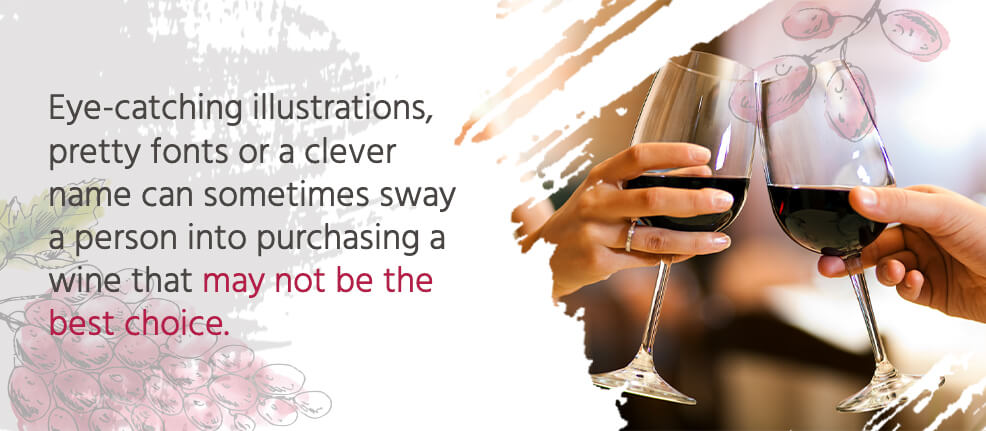
Next, know what you’re looking at on the label. You will find the winery name, a variety of grape, the year the winery harvested the grapes, the region where the grapes grew, the alcohol percentage and, on the back, a description of the wine. Refer back to the definitions of those five basic characteristics: sweetness, acidity, tannin, body and alcohol. If you understand those, the wine descriptions will be much easier to decipher. The description of the wine may also list notes or aromas that will include familiar flavors, such as citrus, black cherry, apple, plum or chocolate. If you enjoy the flavors in the description, there is a good chance you will enjoy the wine.
While the information on wine labels is fairly standard, it may not always be in the same place. More prominent wineries may list the name front and center on the bottle. Other bottles may show the variety of grape in the center, with the name of the vineyard in smaller text at the top or bottom. The more you familiar you become with reading wine labels, the easier it will be to find the information you are looking for.
5. Look for “second-label” wines.
When vineyards harvest grapes, their very best, fully matured grapes go into the primary batch of wine, which they call their “first label.” These wines are often the ones connoisseurs praise, and overwhelmingly have two qualities in common — they are often available in limited quantities and, therefore, can be very expensive. Your search for amazing wine may lead you to some of the big-name vineyards, and rightly so. However, if you are just getting started and aren’t confident in what wines you enjoy, the price tag can be tough to justify. That is when second-label wines can be a great alternative to pricey first-label bottles.
As a vineyard pursues perfection in winemaking, they become more selective in the grapes they use for their first label. In this case, more grapes that may not be as mature or polished don’t make the cut. Rather than selling these grapes or disposing of them, the vineyard will often put them through a winemaking process that is nearly identical to the first label, but sell it under another name, or a second label. Because these wines come from the same expert vineyards, these second labels will still give you a taste of high-quality wine, but at a fraction of the price.
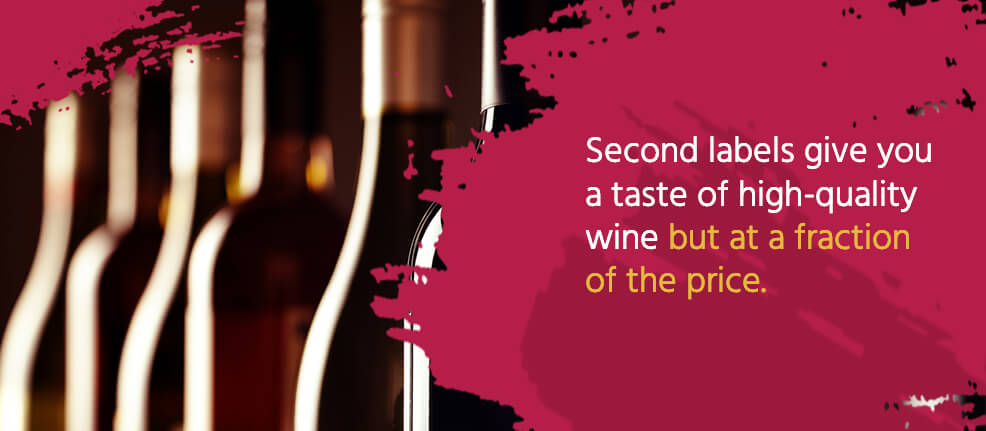
If you are familiar with some of the big-name wineries, you can usually spot a second label, as it will incorporate some part of their winery name. Some brief research can also point you in the right direction for finding a notable second label to try. Second labels are an excellent choice for budding wine enthusiasts, as they will help you decide which more expensive wines you want to splurge on in the future.
6. Don’t stress over the age of the wine.
While it’s a common perception that older is better when it comes to wine, this is not the case. Only some wines taste better with age, and different wines are best after different aging periods. Properly aging wine depends on many factors, including the region the wine is from and the amounts of tannins, sugars and acids it contains. In general, aging is more important for red wines than white wines, but any wine you purchase at the store will be ready to drink. In fact, most wines are not meant to be aged, and you should consume them within five years of purchasing them. However, if there’s ever a time to take a close look at the year on the bottle, it’s for red wines. If you’re looking for how to choose a good red wine and find yourself stuck between two different years of a variety, you may want to opt for the older.
7. Don’t let price dictate your choice.
If the wine is on sale, it is likely because it is not in season or it has been sitting in the store’s inventory for a while. These reasons do not mean the wine is of lower quality or won’t still taste great if it is a type of wine you enjoy. These discounts can even be a great opportunity to find a good deal on wine. Choosing an expensive wine for its price point may also lead you astray — a more expensive bottle of wine does not always mean it is going to be a better bottle of wine. When selecting the wine you want to buy, start with the flavors and characteristics you prefer, as well as the occasion, then allow price to be a secondary consideration.
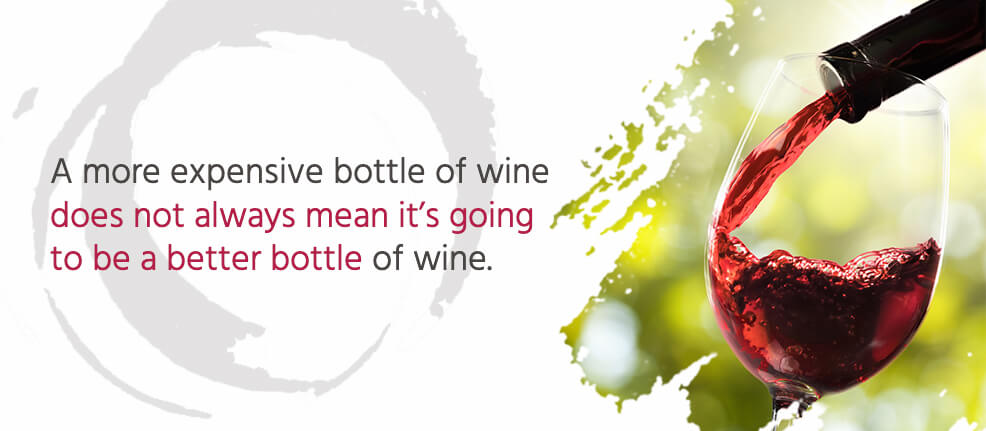
8. Don’t write off bottles with screw caps.
While wine bottles with screw caps can get a bad reputation, they can still hold delicious wine. These caps are for bottles of wine to be consumed in the same year — due to freshness and acidity. So, if you are interested in a wine without a cork, don’t be afraid to take a sip. Screw caps can also be more convenient for occasions such as a picnic, where you might forget to bring a wine opener, and are easier to pack up and take home after an evening out.
9. Keep track of the wines you try.
Once you’ve made your purchase, be sure to make a note of the name of the wine, the region and the variety of grapes. Many wine apps for your smartphone allow you to record your perception of a particular wine. As we have said from the start, finding a “good wine” is really about what you prefer, so tracking what you like and dislike will help you pick better and better wines for you! Keeping these notes handy on your phone also means they are sure to be with you the next time you make a purchase.
Whether you love or hate the wine you try, you’ll have a handy list of great or not-so-great wine purchases you’ve made. When you find a wine you enjoy, go for something similar next time. Try the same region, but a different variety of grapes, or vice versa. Soon, you’ll begin to get a feel for exactly what your preferences are, and choosing a good bottle of wine will be easy.
10. Every once in a while, try a new variety of grape.
While your wine notes will be valuable in teaching you more about the kind of wines you enjoy, it’s important to branch out now and then. As you try more wines, your tastes may change, but without experimenting occasionally, you might miss out on your new favorite wine. When opting for something new, consider moving to the next step in Sonoma State University’s “Wine Palate Life Cycle Wheel” we mentioned earlier. Wine Folly also has a humorous article on the “Evolution of Your Wine Palate” that can direct you on your next step of wine-drinking.
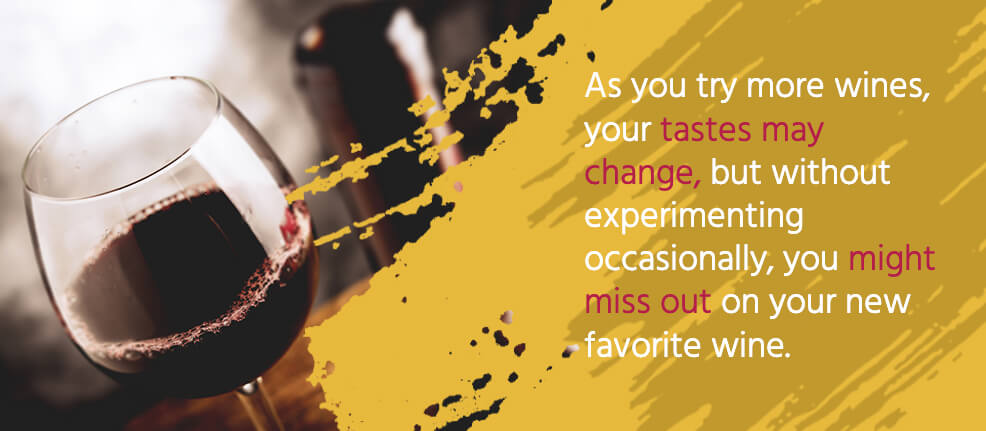
How to Pick out Wine for Dinner
The tips above will provide a great start to establishing your taste in good wine. However, sometimes you aren’t looking for how to choose good wine, but rather how to pick the right wine for a particular meal. A great wine may not always shine in tandem with the wrong food. When it comes to wine pairing, you can revisit the basic characteristics of wine — sweetness, acidity, tannin, body and alcohol — and apply them to pairing.
The overall goal of choosing wine for dinner is to find a wine that either complements or contrasts the flavors. A good wine pairing will give you a more complex burst of flavor from your dining and drinking experience. Here are a few general guidelines for the best wine and food pairings.
1. Acidic food needs an acidic wine.
If you choose wine with low acidity to pair with a meal that has higher acidity, such as meals with citrus or fish, you’re sure to be disappointed. The acidity in the food will overpower the wine, leaving your taste buds with much to be desired. In this case, it’s best to find a higher-acidity wine to match your meal.
2. Salty food is the perfect partner for sweet wine.
The combination of salty and sweet is a classic that carries into the wine-pairing world, too. A sweet wine can help cut the saltiness of a dish, while also highlighting the pleasant sweetness of the wine.
3. Fatty foods work best withbitter, highly acidic or higher ABV wines.
If you’re indulging in a fatty dish, the good news is you have plenty of choices when it comes to how to pick a bottle of wine. The first pairing, found in bitter wines, is the classic combination of steak and dry red wine. The second match, fatty foods with high-acidity wines, is the reason beurre blanc — white wine butter sauce — is so popular. The acidity in the wine cuts through the fat. This pairing is also helpful when selecting an after-dinner wine to enjoy with dessert — a rich, fatty cheesecake is the perfect match for a high-acidity wine. The same flavor sensations occur in the final pairing of fatty foods with wines with higher alcohol content. Consider high-alcohol wines with caution, and only pair them with rich desserts or dinners to savor at a slow pace. Choosing a wine with a high alcohol content and taking a drink between every bite is going to leave you feeling loopy.
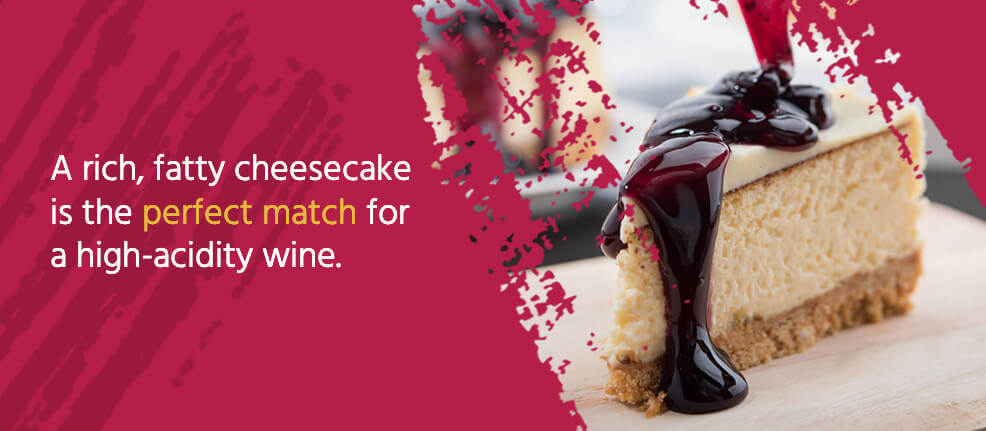
4. Foods and wines from the same region can make great pairings.
In addition to characteristics of the wine and food, another way to make a great pairing is through choosing wines that originate from the same region as the dish you are preparing. Regional pairings aren’t always successful, but for the most part, food and wines that grow together often taste great together. For example, when preparing a traditional Italian dish, consider pairing it with Italian wine that has complementary characteristics.
Matching Characteristics to Types of Wines
Now that you have reflected on the flavors you enjoy and characteristics of wine you desire, the trick is finding the right wine to provide those features. You know what flavor of wine you want, but where do you find it? Below are eight common types of wine, organized from light and sweet to full-bodied and savory. We’ve included a brief description of characteristics and common food pairings for each to get you started on your journey to becoming a wine lover.
1. Riesling
- Light to medium-bodied white wine with lots of fruit flavors, moderate sweetness and high acidity
- Pairs well with chicken, pork, duck, turkey, cured meat and many Thai, Indian, Moroccan, Vietnamese and German dishes
2. Pinot Gris
- Light-bodied white wine with mid-level acidity and subtly sweet fruit and floral flavors
- Pairs with salads, poached fish and light or mild cheeses
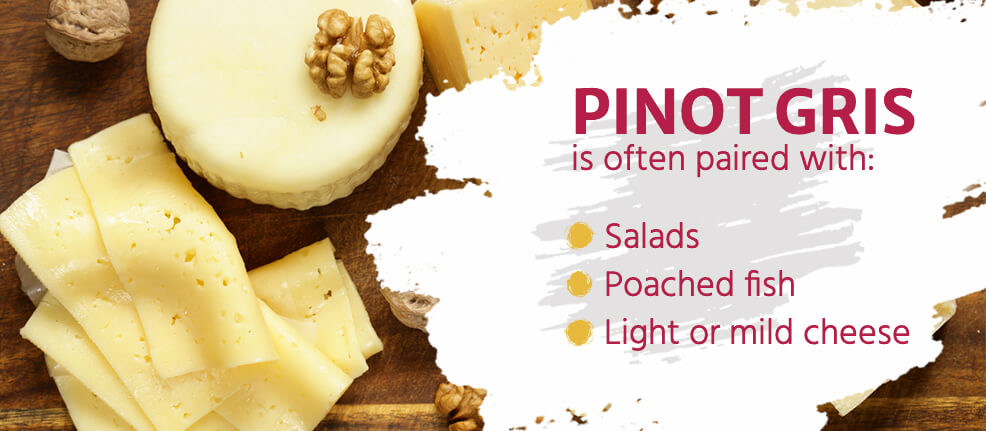
3. Sauvignon Blanc
- Light to medium-bodied white wine with lots of citrus fruit flavors and a high level of acidity
- Pairs well with fish, chicken, pork, veal, herb-crusted or nutty cheeses and many Mexican, Vietnamese and French dishes
4. Chardonnay
- Medium to full-bodied white wine with plenty of yellow fruit flavors and mid-level acidity
- Pairs well with shrimp, crab, lobster, chicken, pork, mushrooms, cream sauces, soft or nutty cheeses and many French dishes
5. Pinot Noir
- Light-bodied red wine with fewer tannins and higher levels of acidity and red fruit flavors
- Pairs well with chicken, pork, veal, duck, cured meats, soft or nutty cheeses, cream sauces and many French and German dishes
6. Zifandel
- Medium to full-bodied red wine with a higher level of fruit flavors and low acidity
- Pairs well with chicken, pork, cured meat, lamb, beef, barbecue and many Italian, American, Chinese, Indian and Thai dishes
7. Syrah
- Full-bodied red wine with a moderate level of tannins with higher fruit flavors and acidity
- Pairs well with beef, lamb, smoked meats, white cheddar cheese and many Mediterranean, French and American dishes
8. Cabernet Sauvignon
- Full-bodied red wine, usually with a high level of tannins and alcohol
- Pairs well with beef, lamb, smoked meats, aged cheddar cheese and many French and American dishes
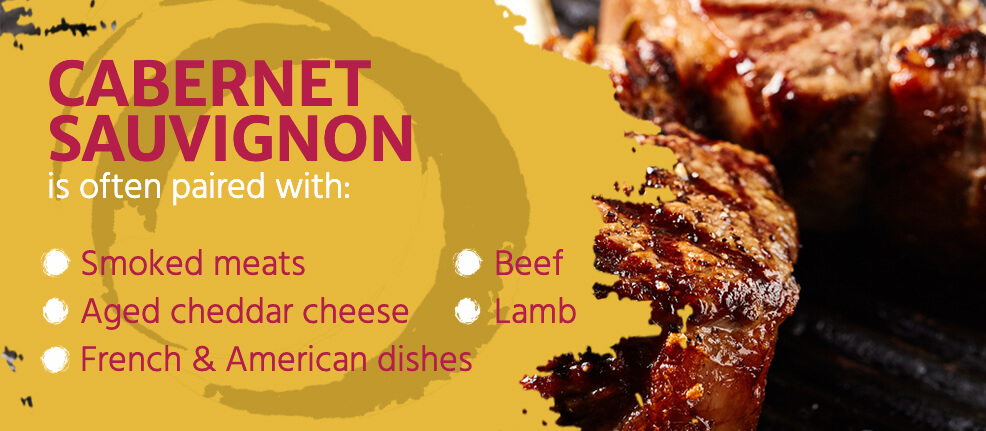
How to Choose a Bottle of Wine at Marketview Liquor
Now that you know more about how to choose a wine for dinner, shop Marketview Liquor’s delicious selection of wines! With a range of prices from discount cases and free shipping for select wines available, you can experiment with a new variety or invest in a wine you know you will enjoy.
Our resources can help you choose a good wine, whether you visit our store in Rochester, N.Y., or decide to order online. Check out “Mike’s Picks” in our weekly ads, on our website and in our store. You can also check out video tastings on our blog — “Wine Time with Mike and Holly” — to give you more specifics about any of our featured wines.
We’ve categorized our online selection so you can easily sort by country, region and type of wine — so you can select a wine you want to start with and quickly find a similar wine when you need a new bottle. Get started by browsing our online wine selection.
